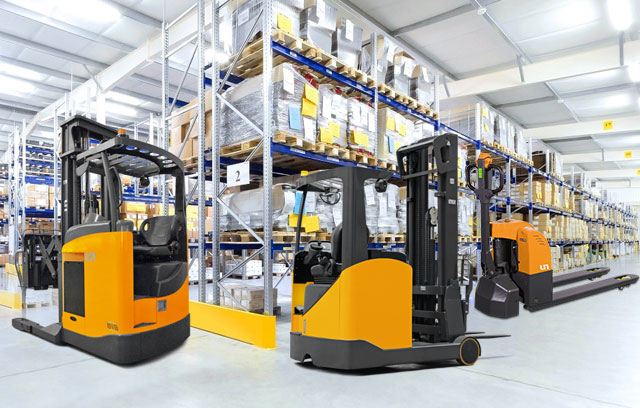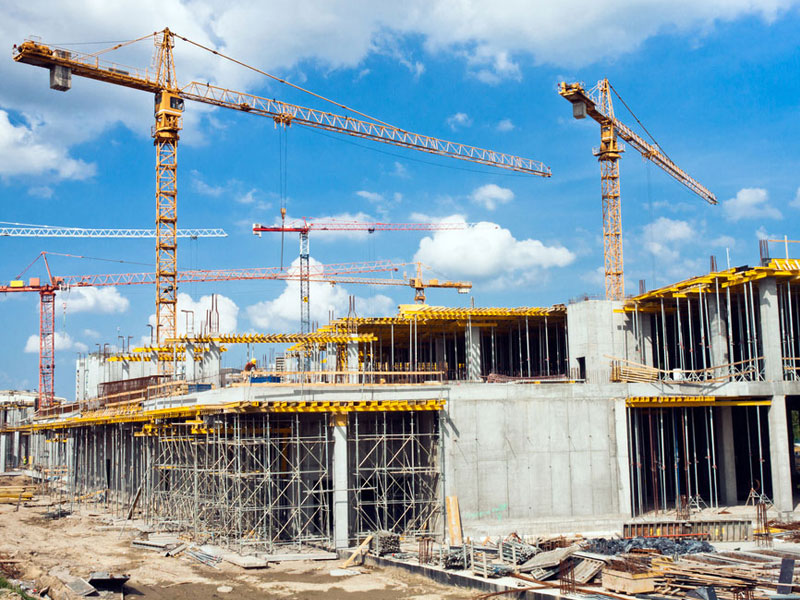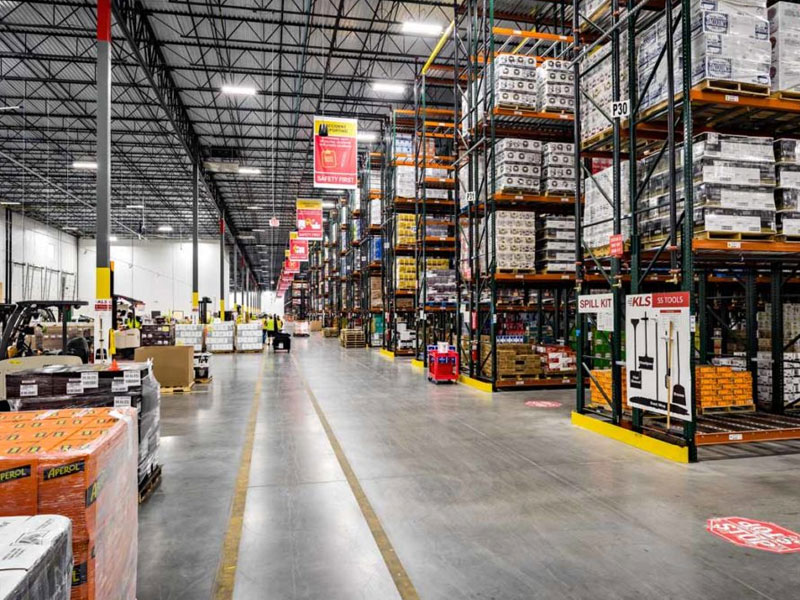Overview of Diesel Forklift Powertrain Structure
The powertrain of a diesel forklift is a mechanical system that transmits power from the engine to the wheels, enabling efficient movement and material handling. It includes several interconnected components such as the diesel engine, clutch, transmission, driveshaft, differential, and final drive. Each of these parts plays a distinct role in generating, managing, and delivering torque to the forklift’s driving wheels. Together, they form a robust mechanism that allows the forklift to lift heavy loads while maintaining stability and maneuverability. Understanding these components is essential for technicians and operators to maintain reliable performance and optimize energy use in various working conditions.
Diesel Engine: The Core of the Powertrain
The diesel engine serves as the primary power source for the forklift, converting chemical energy from fuel into mechanical energy through combustion. Diesel engines are widely used in forklifts because of their fuel efficiency and strong torque output at low revolutions per minute (RPM). The engine operates through a four-stroke combustion cycle—intake, compression, power, and exhaust—ensuring continuous power delivery. It uses a fuel injection system to precisely deliver diesel into the combustion chamber, where it is ignited by compressed air. Engine displacement, cylinder arrangement, and turbocharging options influence the overall performance and efficiency of the forklift. In modern forklifts, electronic control units (ECUs) monitor and adjust engine parameters to achieve optimal combustion and emission compliance.
Fuel Injection and Combustion Control System
The fuel injection system plays a key role in ensuring that the diesel engine operates smoothly and efficiently. It delivers fuel at high pressure to each cylinder, promoting fine atomization and thorough combustion. There are two main types of fuel injection systems used in diesel forklifts: mechanical injection and common-rail electronic injection. Mechanical systems rely on direct pressure from the injection pump, whereas common-rail systems store pressurized fuel in a rail and electronically control injection timing and duration. The latter system enhances fuel economy and reduces exhaust emissions. Proper calibration of injection pressure and timing ensures stable engine operation, particularly under variable load conditions.
Clutch Assembly and Torque Transmission
The clutch is a critical component that connects and disconnects the engine from the transmission. It enables smooth engagement and disengagement of power flow, allowing the operator to change gears or stop the forklift without shutting off the engine. In diesel forklifts, a dry single-plate or multi-plate clutch is typically used. When the clutch pedal is depressed, the pressure plate releases the clutch disc, interrupting torque transfer. Releasing the pedal re-engages the engine and transmission, resuming power flow. The clutch’s friction materials must withstand high temperatures and loads to maintain consistent performance. Regular inspection and adjustment of the clutch assembly are necessary to prevent slippage and ensure effective torque delivery.
Transmission System: Controlling Speed and Torque
The transmission, also known as the gearbox, adjusts the engine’s torque and speed to match the forklift’s operational requirements. It provides multiple gear ratios that allow the forklift to move efficiently under different load and terrain conditions. Diesel forklifts may feature either a manual transmission or a torque converter automatic transmission. In manual systems, the operator manually selects gears using a gear lever, offering greater control in specific lifting tasks. Automatic systems use hydraulic torque converters and planetary gears to shift automatically based on engine load and speed, improving ease of operation. The transmission’s internal gears and bearings must be precisely machined and lubricated to ensure durability and smooth gear shifting.
Hydraulic Torque Converter in Diesel Forklifts
Many modern diesel forklifts are equipped with a hydraulic torque converter that replaces the traditional clutch in automatic transmissions. The torque converter transfers power from the engine to the transmission through fluid coupling, enabling smooth acceleration without direct mechanical engagement. It consists of three main elements: the pump, turbine, and stator. The pump, connected to the engine, propels transmission fluid toward the turbine, which in turn drives the transmission input shaft. The stator redirects fluid flow to increase torque during startup or heavy load operations. This design enhances drivability and protects the powertrain from shock loads. However, maintaining correct fluid levels and cleanliness is crucial for ensuring efficient torque conversion.
Driveshaft and Power Transfer Mechanism
The driveshaft is a rotating mechanical component that transmits torque from the transmission to the differential. It must withstand high torsional stresses while maintaining balance to avoid vibration. In diesel forklifts, the driveshaft is typically made from high-strength steel tubing, designed to minimize flex and fatigue during operation. Universal joints at both ends of the shaft allow for flexibility in angular motion between the transmission and differential. Proper alignment of the driveshaft is essential to prevent premature wear of bearings and couplings. Periodic inspection for cracks, imbalance, or misalignment ensures smooth power transfer and stable forklift performance.
Differential and Final Drive System
The differential is responsible for distributing power to the drive wheels while allowing them to rotate at different speeds during turning. This mechanism is crucial for maintaining stability and reducing tire wear. In diesel forklifts, the differential assembly is integrated with the final drive, which provides additional torque multiplication before reaching the wheels. The final drive usually employs a set of reduction gears that lower the rotational speed while increasing torque, ensuring the forklift can handle heavy loads with minimal strain on the engine. The differential housing is lubricated with gear oil to minimize friction and heat buildup during continuous operation.
Axle Assemblies and Wheel Integration
The axle assemblies form the final link in the powertrain, transferring mechanical energy from the differential to the drive wheels. In most diesel forklifts, the rear axle is the driving axle, while the front axle provides steering control. The axles incorporate reduction gears and bearings that must sustain both radial and axial loads. Seals and lubricants prevent contamination and maintain operational smoothness. Axle design can vary depending on load capacity, wheel size, and operational environment. For heavy-duty forklifts, reinforced axles with larger gear ratios are used to manage high torque output without compromising stability or control.
Cooling and Lubrication Systems
The powertrain’s efficiency depends heavily on effective cooling and lubrication. The engine and transmission generate considerable heat during operation, which must be dissipated to prevent component damage. The cooling system typically includes a radiator, water pump, thermostat, and coolant reservoir. Engine oil and transmission fluid provide lubrication to moving parts, reducing friction and wear. Regular maintenance, such as checking fluid levels and cleaning filters, ensures consistent thermal and mechanical performance. Some diesel forklifts are equipped with oil coolers to maintain stable fluid temperatures during continuous heavy-duty operations, especially in high-temperature environments.
Control and Monitoring Components
Modern diesel forklifts incorporate electronic monitoring and control systems that enhance powertrain efficiency and reliability. Sensors detect engine temperature, oil pressure, and transmission speed, transmitting data to the control unit for analysis. The control unit adjusts fuel injection, throttle response, and gear shifting to optimize performance under varying load conditions. Diagnostic systems can alert operators to potential issues such as overheating or transmission slippage, allowing preventive maintenance before failures occur. This integration of mechanical and electronic systems contributes to smoother operation and improved fuel management, reducing downtime in industrial environments.
Comparative Characteristics of Powertrain Components
The various components of a diesel forklift powertrain each contribute unique functions to the overall operation. The table below provides a comparative overview of their main characteristics and roles within the system.
| Component | Main Function | Key Material | Maintenance Requirement |
|---|---|---|---|
| Diesel Engine | Generates mechanical power from fuel combustion | Cast iron or aluminum | Regular oil and filter changes |
| Clutch | Engages and disengages power transmission | Steel and friction composites | Periodic adjustment and inspection |
| Transmission | Controls torque and speed ratios | Hardened steel gears | Fluid level and seal inspection |
| Driveshaft | Transfers torque to differential | Alloy steel | Check alignment and joint wear |
| Differential | Distributes torque between wheels | Forged steel gears | Lubrication and gear oil replacement |
Hydraulic Assistance and Power Distribution
In addition to mechanical power transmission, diesel forklifts rely on hydraulic systems for lifting and steering functions. The powertrain supplies mechanical energy to the hydraulic pump, which generates fluid pressure to operate the lift cylinders and steering mechanism. This integration between the powertrain and hydraulic circuits ensures synchronized operation. The hydraulic system uses control valves to regulate pressure distribution based on the operator’s input, maintaining stability during lifting or turning. Effective coordination between these systems allows the forklift to achieve smooth operation and precise control even under demanding load conditions.
Maintenance Importance for Long-Term Powertrain Performance
Regular maintenance of the diesel forklift powertrain is essential for ensuring long-term reliability and efficiency. Scheduled inspections focus on fluid levels, lubrication, component alignment, and seal integrity. Neglecting maintenance can lead to reduced performance, excessive fuel consumption, and premature wear of critical parts. Proper servicing intervals, guided by the manufacturer’s recommendations, extend the operational life of the engine, transmission, and drive components. Operators are encouraged to monitor unusual sounds, vibrations, or heat buildup as early indicators of mechanical issues. Adhering to preventive maintenance practices supports consistent torque delivery and safe handling across various industrial applications.
Comparison Between Diesel and Electric Forklift Powertrains
Although diesel forklifts are known for their robust torque and endurance, electric forklifts have gained popularity due to energy efficiency and lower emissions. The following table highlights the main differences between the two powertrain types in terms of structure and performance.
| Feature | Diesel Forklift Powertrain | Electric Forklift Powertrain |
|---|---|---|
| Power Source | Internal combustion engine | Electric motor and battery |
| Torque Characteristics | High torque at low RPM | Instant torque at startup |
| Maintenance | Requires fluid checks and mechanical servicing | Low mechanical maintenance |
| Operating Environment | Suitable for outdoor or heavy-duty operations | Preferred for indoor and clean environments |
Integration of Emission Control and Efficiency Measures
Modern diesel forklift powertrains are designed with emission control technologies to comply with environmental standards. Components such as exhaust gas recirculation (EGR) systems, diesel particulate filters (DPFs), and selective catalytic reduction (SCR) units help reduce harmful emissions. The ECU regulates fuel injection and air intake to maintain a balanced air-fuel ratio, enhancing combustion efficiency. These advancements not only reduce environmental impact but also improve fuel utilization and engine longevity. Continuous improvements in combustion and filtration systems demonstrate how diesel powertrains can adapt to evolving sustainability requirements without compromising functionality.











 中文简体
中文简体 عربى
عربى Español
Español














